Getting Started With QuickNode
QuickNode is a Web3 developer platform used by teams big & small to build and scale blockchain applications. Access 24+ chains and 35+ networks in seconds, and get tools to ship the best version of your dApp. Read more on how to use QuickNode to #buidl the dApp of your dreams!
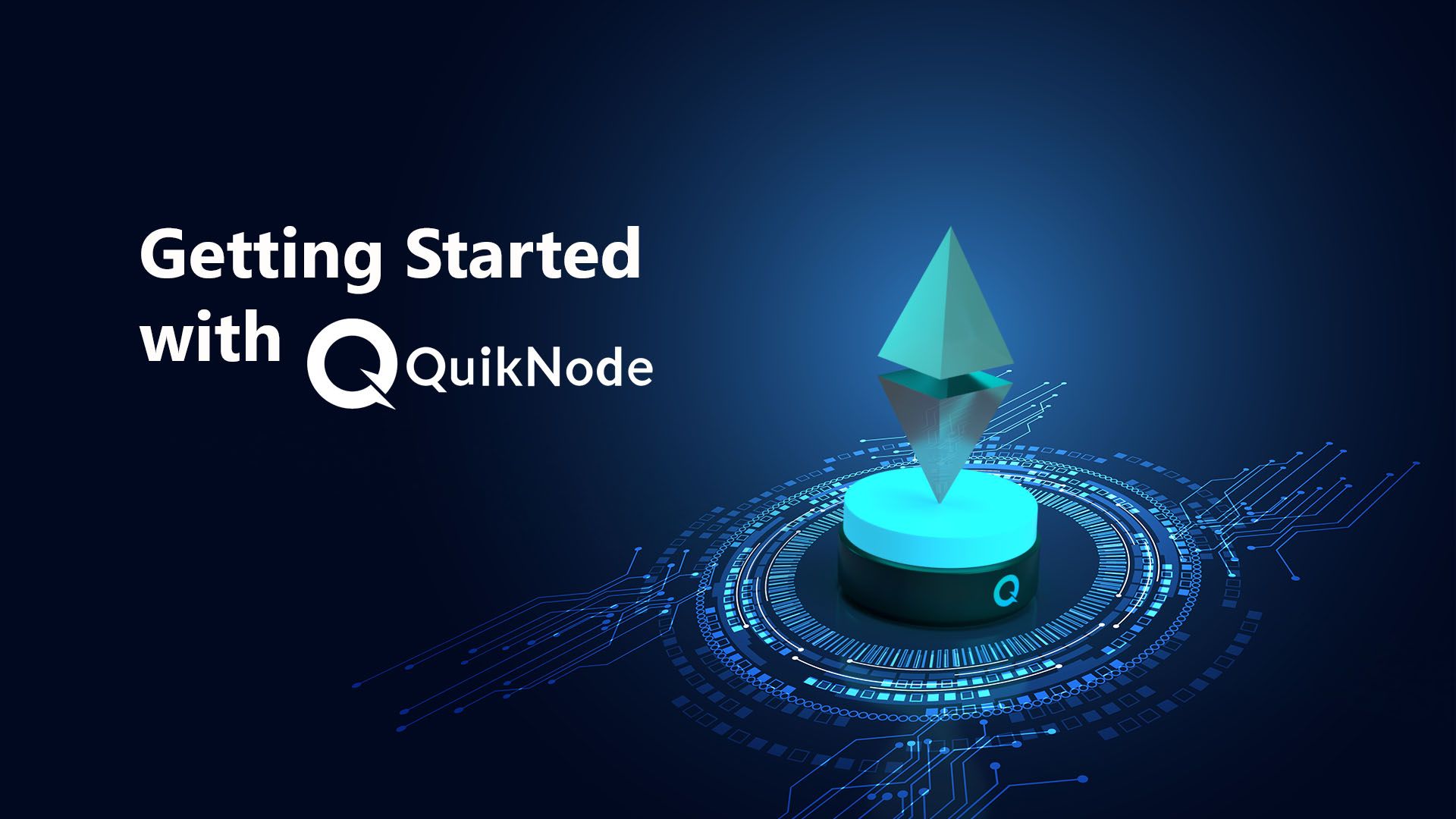
With the evolution of Web3 and the recent boom in Decentralized Finance (DeFi), Web3 developers are jumping on board and rapidly building decentralized applications (dApps) on Ethereum and other Blockchains. Building dApps on Ethereum is awesome and already has many interesting use cases (with more & more uses emerging every day), but the process does come with some infrastructure & setup challenges. In other words, it’s all fun and games and until you have to spin up your node.
Introducing QuickNode
Not only does Blockchain development require a specific type of node, it also demands constant monitoring and maintenance, which can be daunting and prevent Web3 developers from focusing on the actual product they’re building.
Many Web3 developers agree: running your own Ethereum node can be a huge pain that often prevents many Web3 developers from going further in their learning process. Fortunately, there are some good folks who have been working on making the developers’ lives much easier.
Tools like QuickNode, which are not new on the block and have been on the market for several years, greatly reduce the hassle of launching and maintaining Blockchain nodes – allowing Web3 developers to focus on the build and not the infrastructure. If you're a Web3 developer, you no longer need to run your own DevOps to develop on the blockchain.
The hassle of running your own Node
Here are some critical issues associated with running your own Ethereum node:
- Space: Blockchains are distributed Ledgers and a Full node will contain an entire copy of the ledger, which at the time of writing this guide is over 4TB and growing rapidly, even running a fast sync will be around 300 GB. Last time we checked, SSD storage space, bandwidth, and time all cost money.
- Time: Depending on your connection speed, the first time sync on Ethereum MainNet can take days, that is if you’re lucky and your connection is fast and stable enough.
- Security / Maintenance: Node clients can be quite fussy and absolutely not easy to maintain (memory leaks, bugs, disk issues, etc...), requiring constant monitoring, not to mention having to provide your own security.
- Disaster Recovery: Things like node crashes and database corruptions can leave your node down for days. It can take up to 3 weeks to recover from a major infrastructure failure.
What QuickNode Offers
QuickNode is a distributed global network of high-performance nodes, with consistent support and performance regardless of your location. No matter where you are, you can rely on QuickNode’s steady performance, uptime and excellent support from a community of like-minded developers.
High Speed: No need to worry about performance - QuickNode is engineered from the ground up to be the fastest Web3 provider. Not only will your apps be easier to build and run (at scale, too!), they will also be faster and more reliable (ie. more enjoyable for your users to use).
Multi-chain support: QuickNode currently supports 19 chains (including top chains like Ethereum, BNB Smart Chain [BSC], Polygon, Solana, Avalanche, Base, Optimism, Arbitrum) and 35+ networks (Mainnet, Testnet, Devnet) – and is constantly working on adding new chains, which is great if you’re building on more than one network.
WebHooks: QuickNode has support for WebHooks, and allows developers to bring Web3 smart-contract event listeners to Web2 by handling the discovery and notification of most any on-chain event in real-time. No need to run a 24/7 server for polling or WebSocket listening. Learn more about QuickAlerts here!
Multiple Testnet support: QuickNode supports nearly all major testnets (and devnets), providing great flexibility to developers for testing applications on their preferred testnet. Need testnet tokens? Use our faucet!
Archive Nodes: QuickNode provides archive nodes that keep a full copy of the ledger, in comparison to full nodes that may perform pruning for infra-related reasons. This is a critical feature for businesses that benefit from blockchain analysis and research. Learn more about QuickNode archive nodes here.
Multi-Client support: QuickNode supports Geth and Erigon for Ethereum (ETH), for example. Requests are automatically routed to the most optimal client for best performance.
Marketplace: An entire universe of infrastructure at your fingertips! Select from dozens of add-ons that make building super-powered dApps easier than ever. Learn more.
IPFS: Use QuickNode to upload, store, manage, and retrieve data on the IPFS network through our pinning services and dedicated gateways. Learn more.
Developer SDK: The QuickNode SDK is designed to facilitate interaction with QuickNode infrastructure. Developers can effortlessly leverage the Graph API to access a wide range of valuable data and insights, including market insights, trading data, wallet and contract transactions, cached NFT images, and much more. Learn more.
Getting Started with QuickNode
Let’s get started and see how easy and painless it is to spin up your own Blockchain node in just a few minutes:
Step1: Go to https://QuickNode.com/, create account and verify your email.

Step2: Select Your Plan
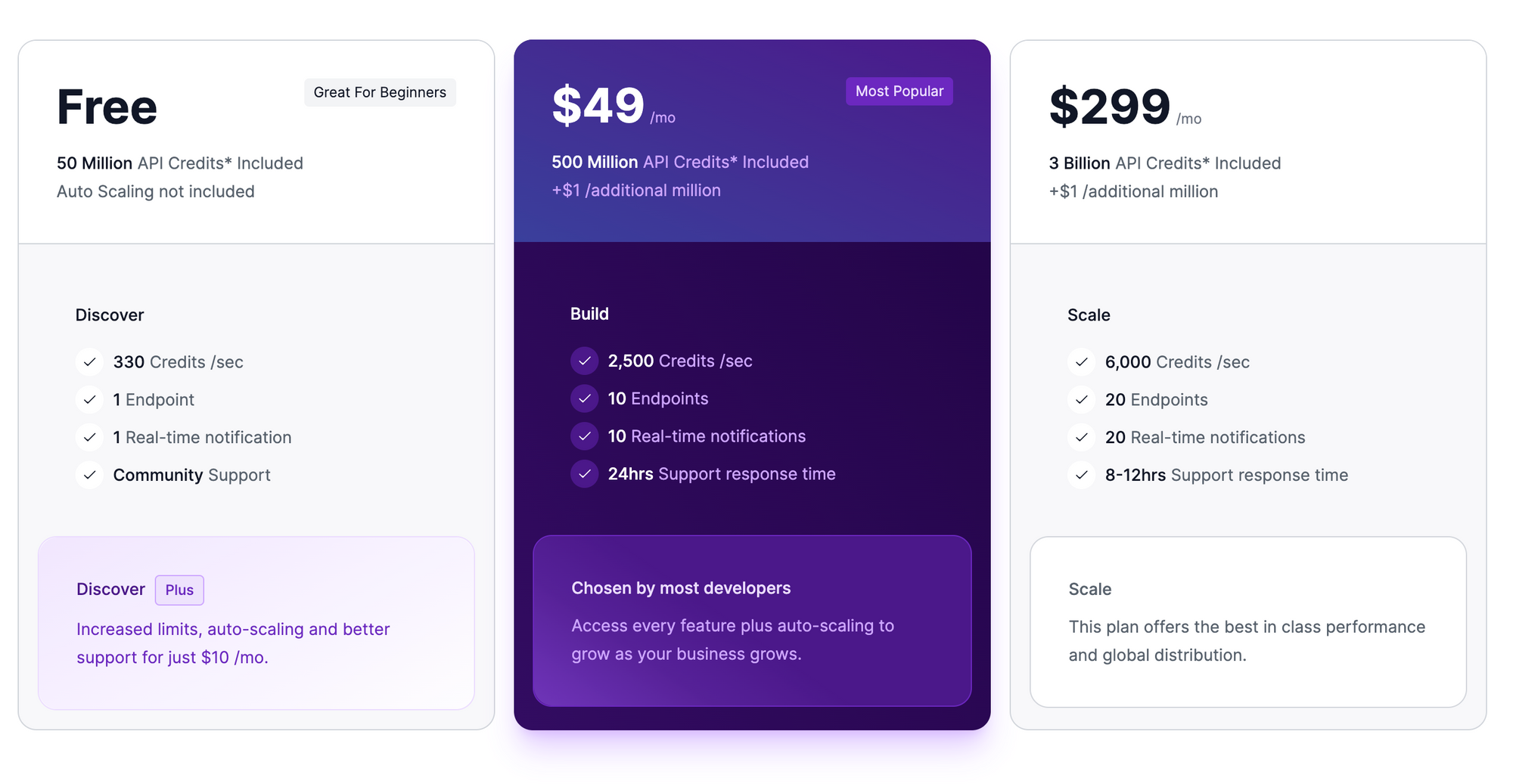
Step3: Create your endpoint
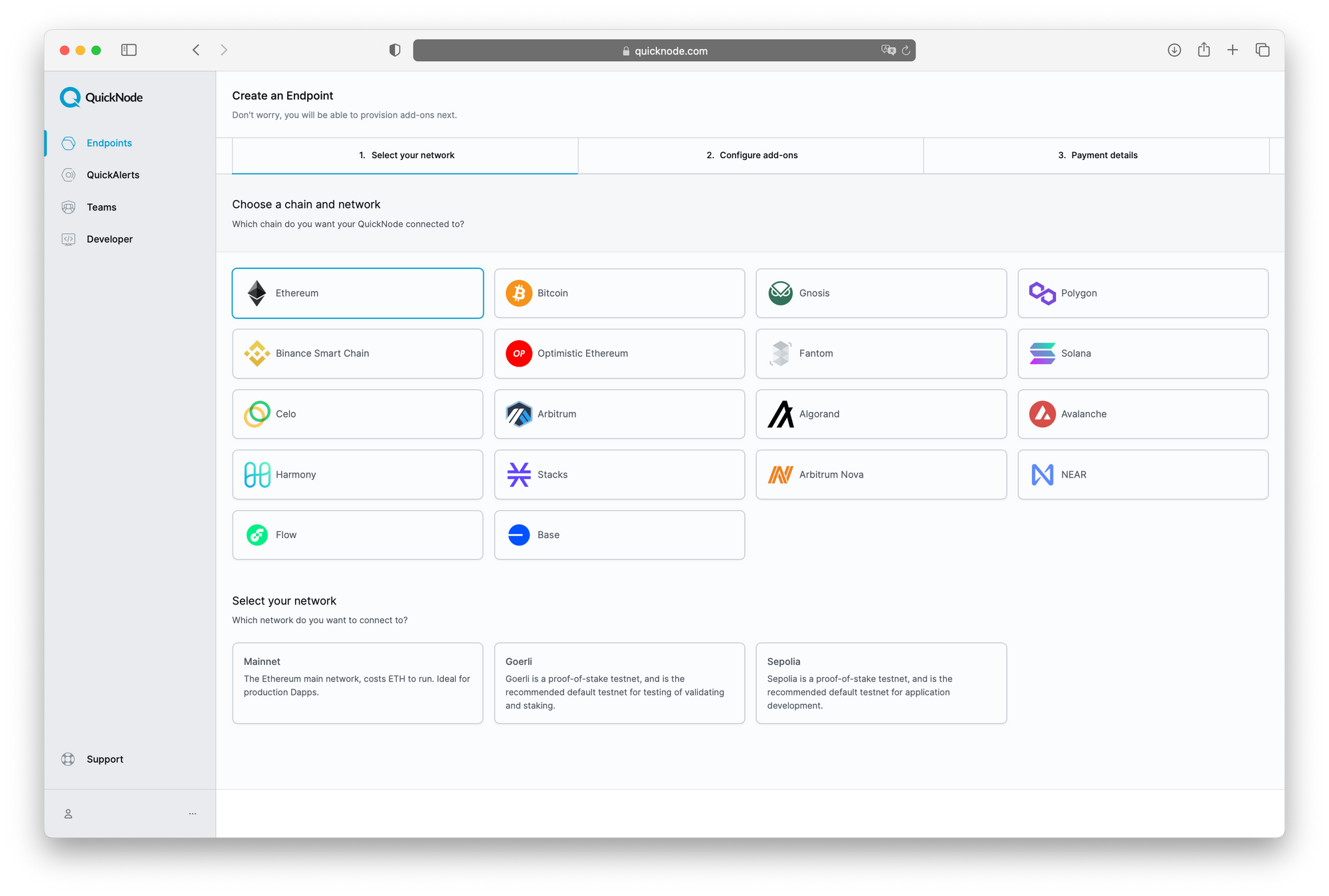
Done! Your node will be ready in a moment:
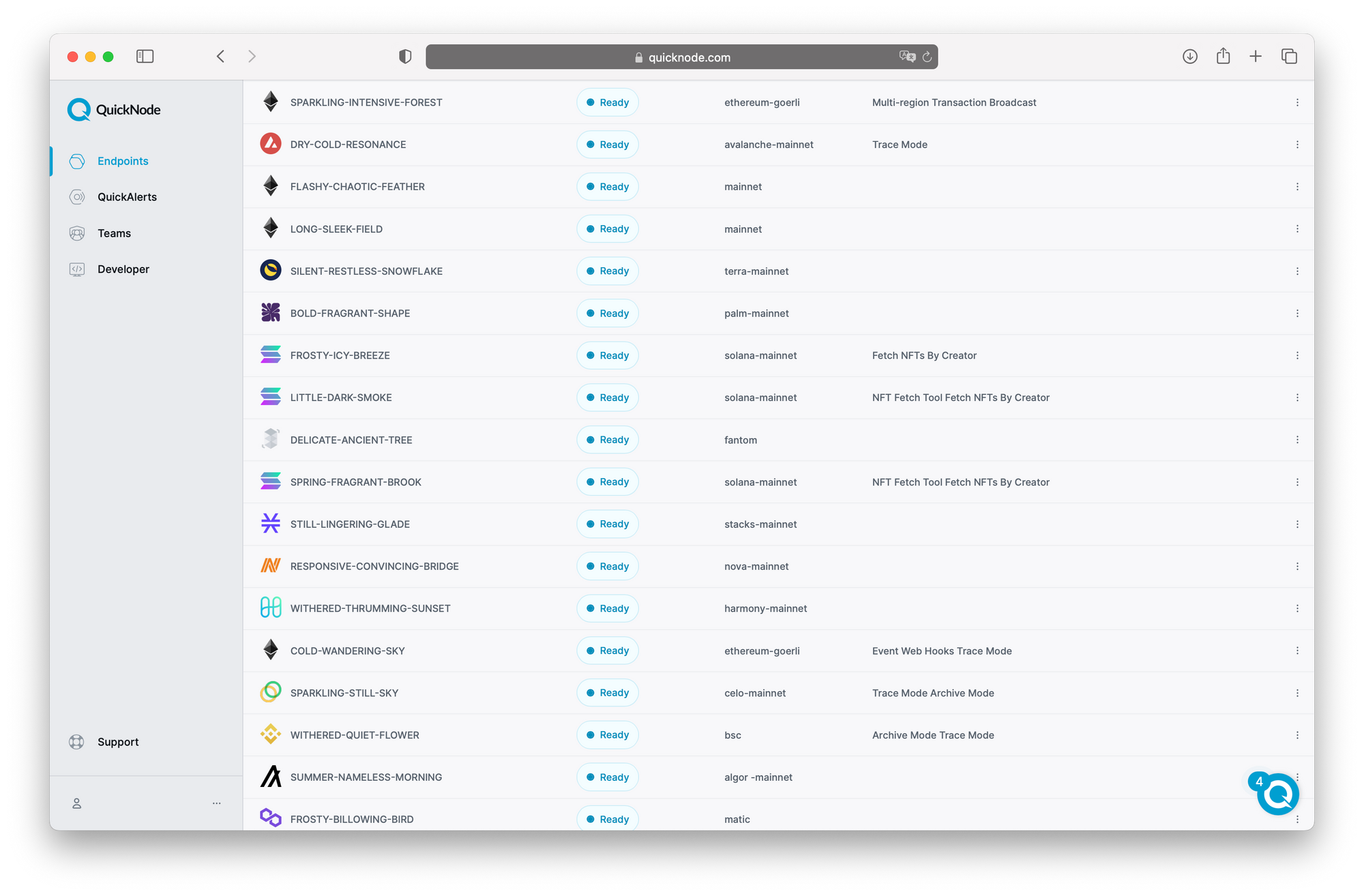
Using QuickNode in your dApp
The following example uses JavaScript and Node:
- Install the web3 library:
$ npm install web3
2. Create a test script that obtains the latest block number from the Ethereum blockchain, save it as index.js and run:
var Web3 = require('web3');
var provider = 'ADD_YOUR_ETHEREUM_NODE_URL';
var web3Provider = new Web3.providers.HttpProvider(provider);
var web3 = new Web3(web3Provider);
web3.eth.getBlockNumber().then((result) => {
console.log("Latest Ethereum Block is ",result);
});
$ node index.js3. Your output should look like this:
Latest Ethereum Block is 11223600
Success! You’ve deployed and connected to your Ethereum node! And it only took a few minutes.
For more languages and frameworks: select QuikStarts tab under your node’s URL in the dashboard for more guides on how to use QuickNode with your dApp.
Find more guides, tutorials, insights and Web3 developer best-practices on the QuickNode Guides page!
Tools & Features
Marketplace
QuickNode Marketplace is the “App Store” for Web3 & Blockchain tools, so you can do things like look up an Ethereum wallet balance with the RPC API, and then enrich the data with real-time token prices using the CoinGecko add-on, all with the same API endpoint. Check it out and add your app to the Marketplace today. Learn more.

EtherFlow
EtherFlow is OSS (Open Source Software) that was created to help users compose RPC calls, test and debug their node. Learn more about EtherFlow here!

Node Metrics
The Metrics tab displays the latest network block, the number of method calls used/remaining, and the client your node is using along with graphical representation of all method calls made using your node.
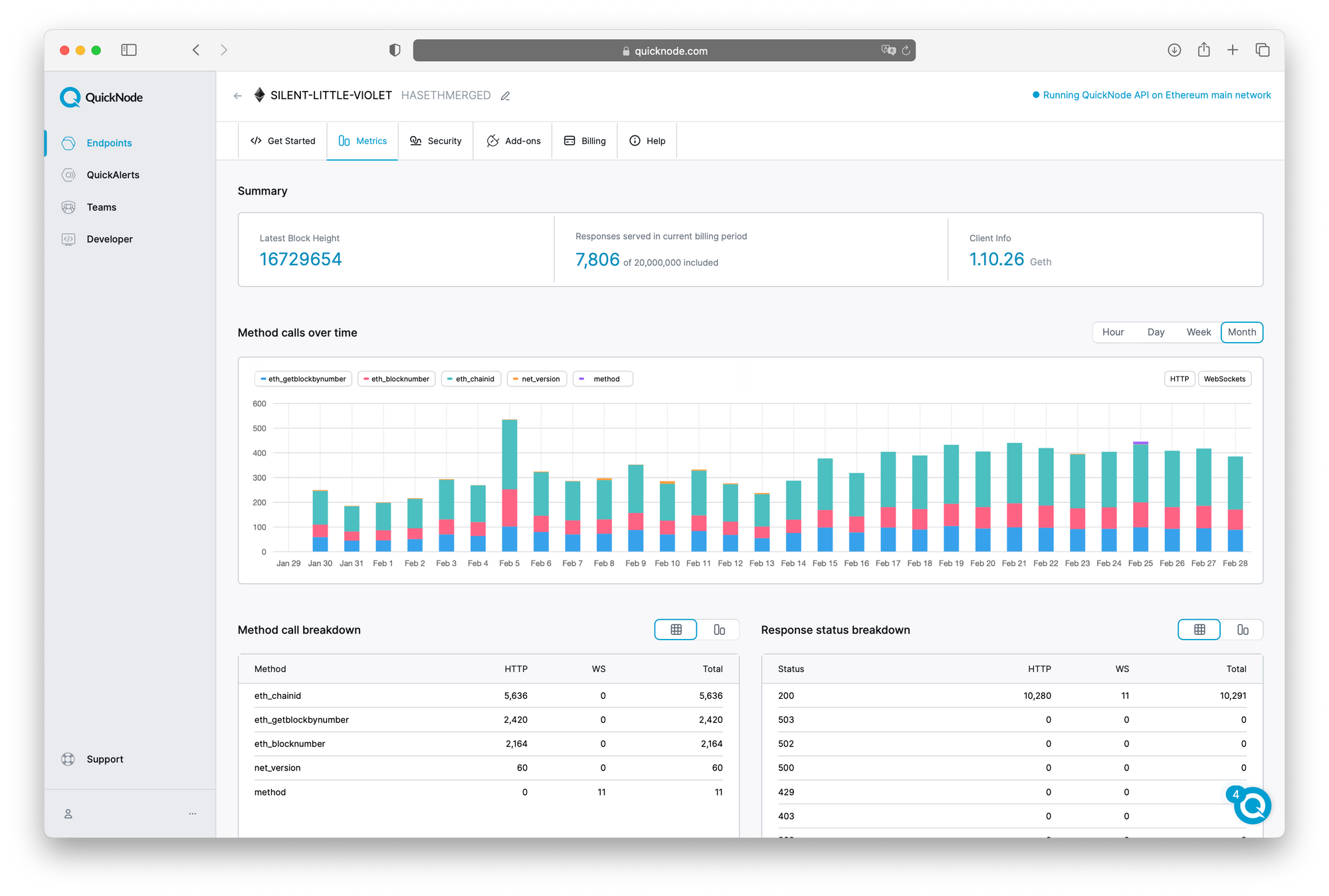
Security
The security tab allows to toggle token based authentication, JWT settings, set the referrer whitelist and the domain Mask.
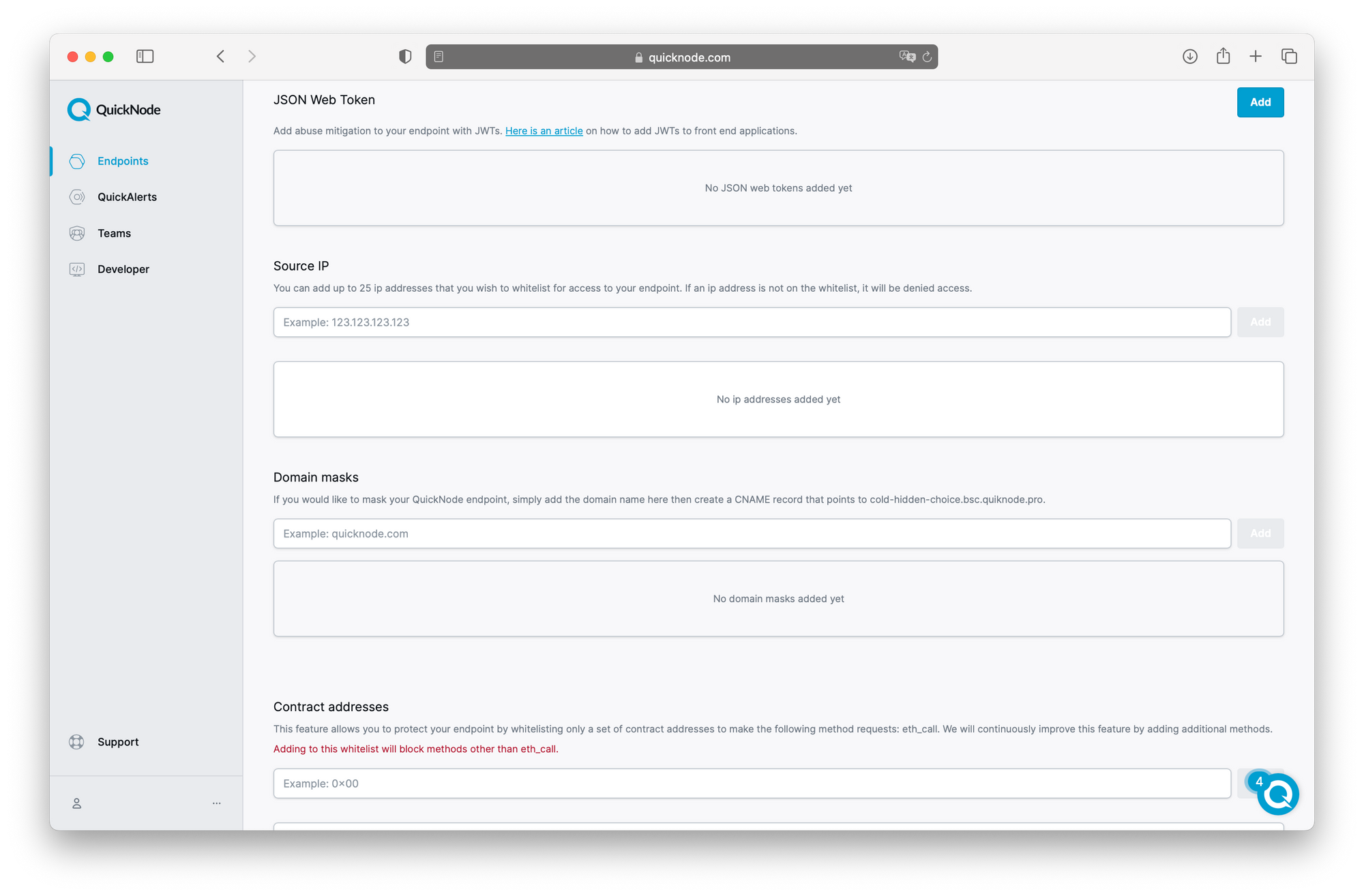
QuickAlerts (WebHooks)
This allows you to set up a WebHook for your node, which provides great flexibility with things like event listeners and more. Webhooks are widely used on Web2.
To learn more about webhooks and QuickNode, check out the QuickAlerts page!
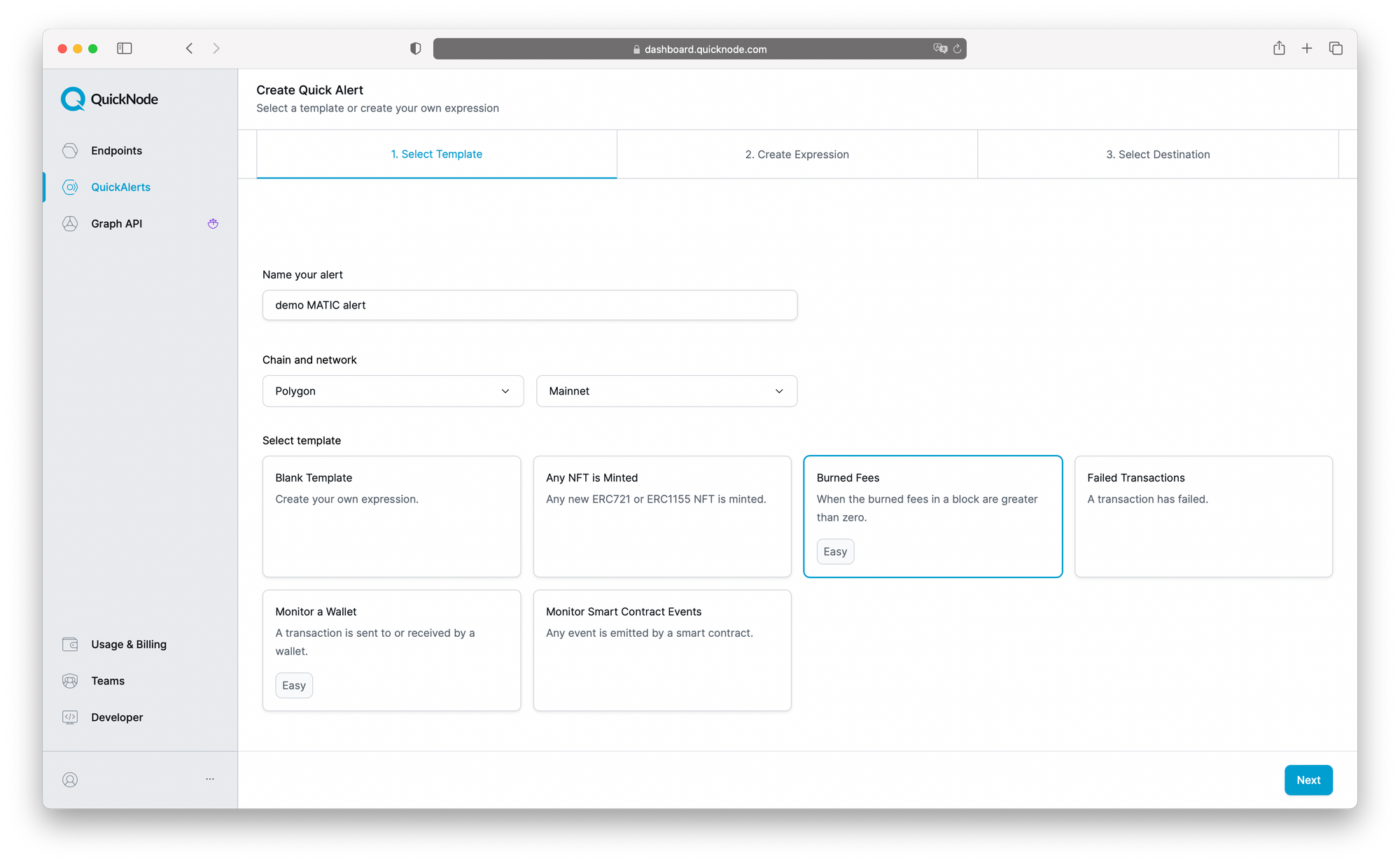
Billing
The Billing section displays usage and upcoming bills / invoices, and allows you to make changes to your plan.

Customer Service
Included with your paid QuickNode subscription is access to our team of Web3, platform, and billing experts. Get help from the community in our Discord, open a ticket for email support, or get VIP live chat via Slack and Telegram. We’ll make sure you are happy!
Conclusion
QuickNode makes running a Blockchain node easy as pie so developers can focus on all the wonderful dApps they’re building, instead of worrying about DevOps/NodeOps, uptime, scaling, security, etc...
QuickNode saves valuable time getting to-market while taking away the headache of node maintenance and synchronization. It’s a valuable tool in every dApp developer’s arsenal that was created by developers for developers. Visit QuickNode’s Guides section for more information.

About QuickNode
QuickNode is building infrastructure to support the future of Web3. Since 2017, we've worked with hundreds of developers and companies, helping scale dApps and providing high-performance access to 24+ blockchains. Subscribe to our newsletter for more content like this, and stay in the loop with what's happening in Web3!

